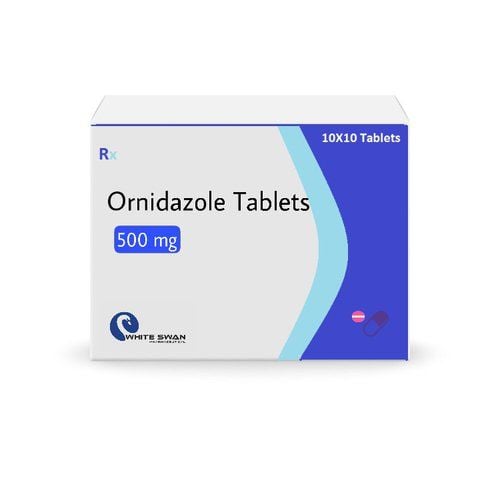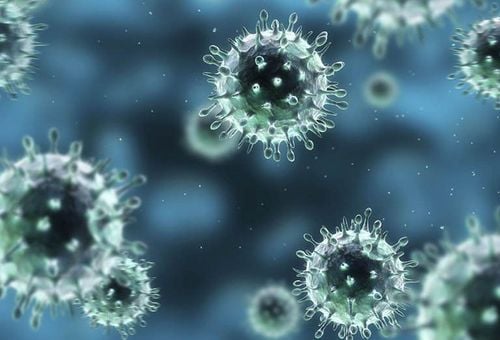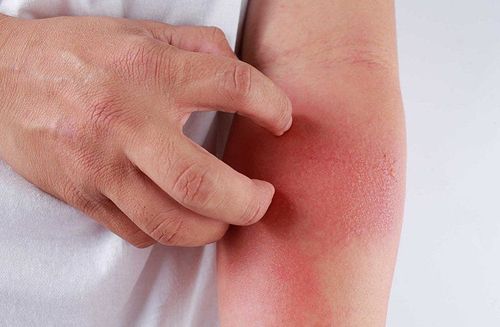This is an automatically translated article.
Arbovirus diseases also known as arthropod viral diseases are common worldwide. About 17% of infectious diseases are caused by Arboviruses. The route of transmission is from Arbovirus that causes diseases of arthropods such as insects, spiders, centipedes, mosquitoes and ticks to humans, the disease is usually mild but can progress to severe later if not treated early. .1. What is an arbovirus that causes disease?
There are hundreds of types of Arboviruses, but not all Arboviruses cause disease. Accordingly, the pathogenic Arbovirus must be able to live in an intermediary, be transmitted through a bite, then multiply and cause disease in humans. Many Arboviruses exist in mammals or birds. When an insect bites one of these mammals or birds, the insect becomes infected and then transmits the disease to humans.However, not all insect-borne diseases are caused by Arboviruses. For example, malaria is a parasitic disease transmitted by mosquitoes. Similarly, Lyme disease is a bacterial disease transmitted by black ticks.
2. What causes Arbovirus disease?
It is important to be aware of the arbovirus that causes illness, especially in certain locations and when traveling far from home.West Nile Virus: The most common Arbovirus disease in the United States and is bitten by the Culex mosquito. About 2,000 people are affected each year. Most people infected with West Nile virus have no symptoms, but about 1% will develop more severe disease in the nervous system. Powassan virus: This disease is transmitted by the Ixodes scapularis tick found in the Northeastern and North Central regions of the United States. Most people who are infected have no symptoms, but those with severe illness can develop an infection of the brain (called encephalitis) or in the membranes around the brain and spinal cord (called meningitis). About 1 in 10 people develop severe illness from the Powassan virus that results in death. Dengue: Causing 25,000 deaths each year, dengue is the most common arbovirus disease. The disease is transmitted by Aedes mosquitoes and is more endemic in Asia, South America or Africa. Yellow fever: This dangerous disease is transmitted by the Aedes mosquito in South America and sub-Saharan Africa. The disease can cause jaundice, bleeding, and kidney failure with a mortality rate of 20% to 60%. Zika virus: Also transmitted by the Aedes mosquito, the Zika virus usually causes low-grade fever, an itchy rash, joint pain, and eye inflammation (conjunctivitis). If you are infected during pregnancy, the arbovirus that causes the disease can be passed to your baby, causing him or her to develop brain damage during infancy. Infection most commonly occurs in the United States, South America, Southeast Asia, and the Pacific islands. Therefore, if you develop symptoms of the disease-causing arbovirus during or shortly after travel, especially to endemic areas, you should seek medical attention immediately.
3. What are the symptoms of the disease caused by Arbovirus?
Most illnesses caused by Arboviruses have similar symptoms. The course of the disease usually appears a few days to two weeks after being bitten by an infected mosquito or tick.Most Arbovirus illnesses will begin with fever, diarrhea, vomiting and body aches. You may also notice a rash on your skin. Dengue fever and yellow fever can also cause mucosal bleeding.
You may also experience symptoms such as headache, stiff neck, excessive sleepiness, convulsions or lethargy. If you have any of these symptoms, your doctor will likely want to check you for meningitis and encephalitis.
4. Who is at risk for diseases caused by Arbovirus?
Your risk of contracting diseases caused by Arbovirus will depend on your lifestyle and location. If you live in an urban area and spend most of your time indoors, your risk is lower than if you spent more time outdoors and traveled more.Example: If you live in the Northeast and Great Lakes regions of the United States, your risk of contracting the Powassan virus is higher. If you travel to South America, Africa, or Asia, you are at greater risk of contracting dengue.
Besides, the seasons are also important in terms of the likelihood of catching the disease Arbovirus. About 90% of the cases of the disease-causing Arbovirus occur between April and September in the United States.
5. What are the treatments for diseases caused by Arbovirus?
See your doctor if you have symptoms that suggest arbovirus disease and think you've been exposed to insects. At this time, the doctor will decide the examination procedure and do the corresponding disease test. In the case of mild illness, costly laboratory testing may not be worth the exact value of the causative Arbovirus.For severe illness, when Arbovirus causes the patient to rise in your blood for a short time, specific antibodies are produced and increase the diagnostic capacity. As such, your doctor will order a blood test to determine what infection you may have. In addition, if you have more severe disease, a brain scan may be ordered to evaluate for a CNS infection.
To date, diseases caused by Arbovirus have no specific treatment. Your doctor will likely prescribe medication such as Acetaminophen (Tylenol) to help reduce fever and body aches. If you have severe symptoms, you may be hospitalized for intravenous fluids and medications to control fever and pain.
6. How to prevent illness caused by Arbovirus?
The way to prevent disease-causing Arboviruses from entering the body is simply to avoid the vectors that carry them. Communities can plan to spray pesticides, clear up livestock sites and reduce standing water in the area, especially when it comes to growing season.At the same time, each person also needs to know how to protect himself or herself from insects, including covering the body with long clothes, wearing boots, covering windows and doors with nets, avoiding areas Infested areas and apply insect repellents such as DEET (Diethyltoluamide).
A vaccine is available to protect against yellow fever and it is recommended if you plan to travel to countries where the disease is common, such as Argentina, Brazil, Angola or the Democratic Republic of the Republic of China. Congolese owner. In addition, vaccines against many other arbovirus diseases are still being studied.
In the future, gene-edited mosquitoes will be released into the wild, and similar technologies can contribute to the prevention and control of diseases caused by Arboviruses.
In summary, the pathogenic Arbovirus is transmitted to humans through arthropods. Although there is no specific treatment for diseases caused by Arboviruses, most cases are fully reversible. However, a small number of patients can also become severely ill with neurological damage or death. Therefore, it is important to take serious precautions to reduce the risk of contracting the disease-causing Arbovirus whenever, whether traveling or at home.
References: health.ny.gov, healthline.com, webmd.com
Please dial HOTLINE for more information or register for an appointment HERE. Download MyVinmec app to make appointments faster and to manage your bookings easily.













